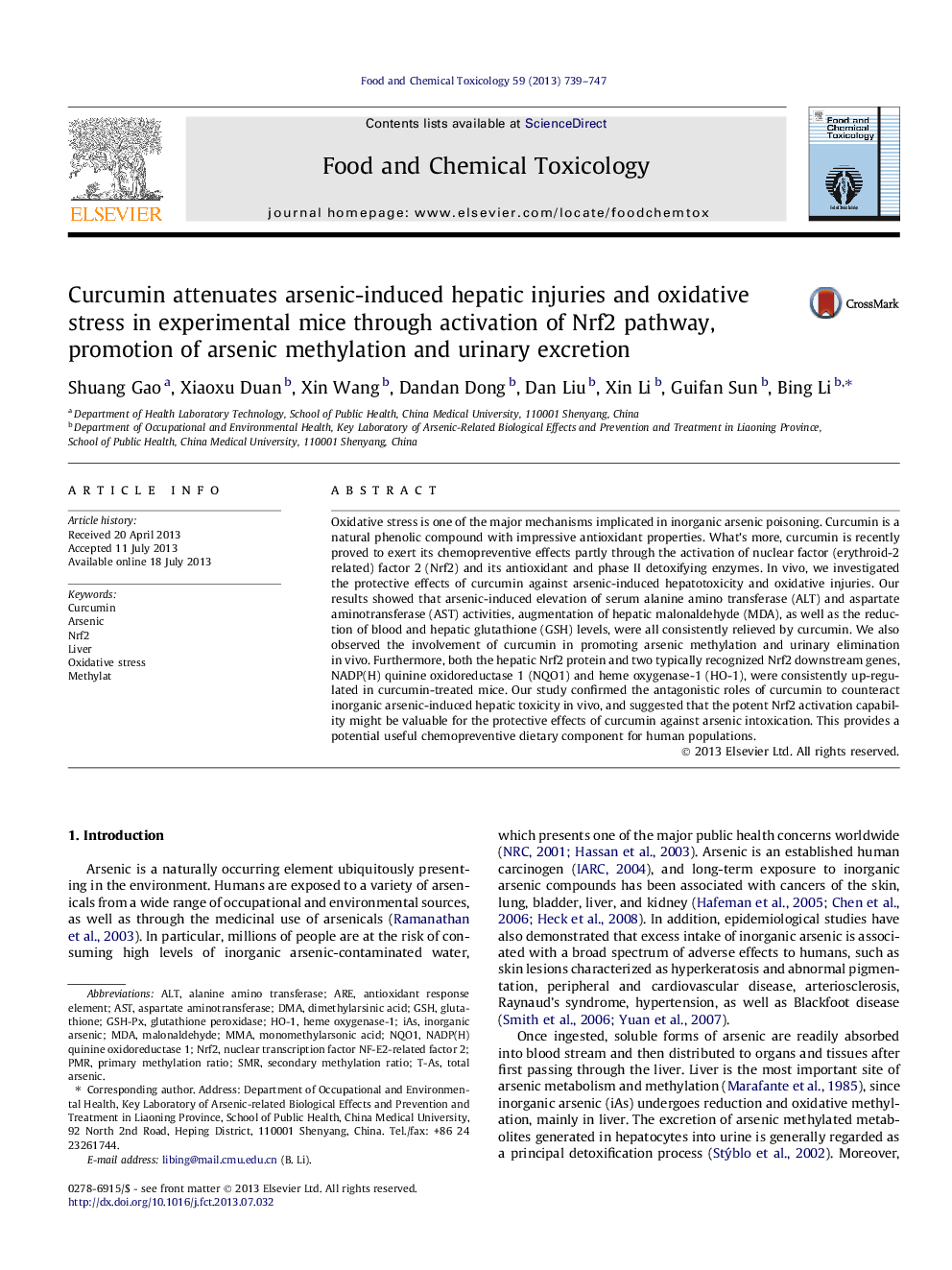| Article ID | Journal | Published Year | Pages | File Type |
|---|---|---|---|---|
| 5851156 | Food and Chemical Toxicology | 2013 | 9 Pages |
Abstract
Oxidative stress is one of the major mechanisms implicated in inorganic arsenic poisoning. Curcumin is a natural phenolic compound with impressive antioxidant properties. What's more, curcumin is recently proved to exert its chemopreventive effects partly through the activation of nuclear factor (erythroid-2 related) factor 2 (Nrf2) and its antioxidant and phase II detoxifying enzymes. In vivo, we investigated the protective effects of curcumin against arsenic-induced hepatotoxicity and oxidative injuries. Our results showed that arsenic-induced elevation of serum alanine amino transferase (ALT) and aspartate aminotransferase (AST) activities, augmentation of hepatic malonaldehyde (MDA), as well as the reduction of blood and hepatic glutathione (GSH) levels, were all consistently relieved by curcumin. We also observed the involvement of curcumin in promoting arsenic methylation and urinary elimination in vivo. Furthermore, both the hepatic Nrf2 protein and two typically recognized Nrf2 downstream genes, NADP(H) quinine oxidoreductase 1 (NQO1) and heme oxygenase-1 (HO-1), were consistently up-regulated in curcumin-treated mice. Our study confirmed the antagonistic roles of curcumin to counteract inorganic arsenic-induced hepatic toxicity in vivo, and suggested that the potent Nrf2 activation capability might be valuable for the protective effects of curcumin against arsenic intoxication. This provides a potential useful chemopreventive dietary component for human populations.
Keywords
Related Topics
Life Sciences
Agricultural and Biological Sciences
Food Science
Authors
Shuang Gao, Xiaoxu Duan, Xin Wang, Dandan Dong, Dan Liu, Xin Li, Guifan Sun, Bing Li,
